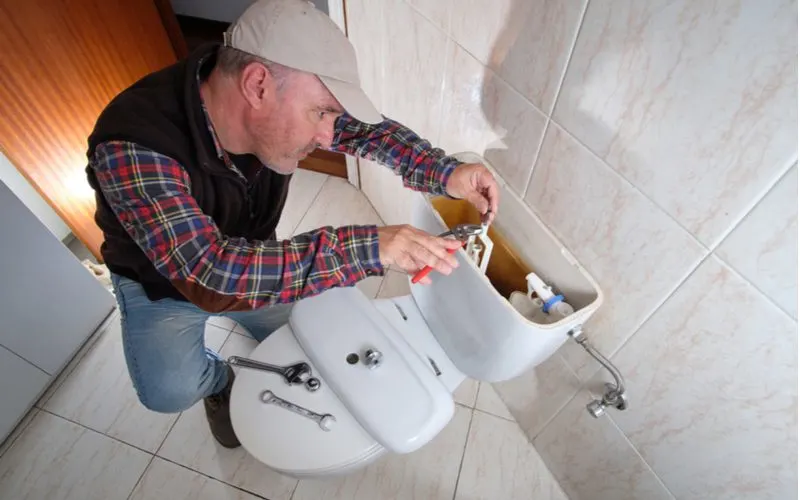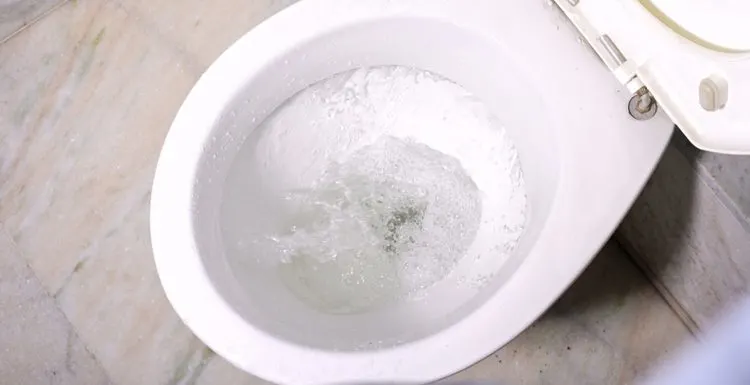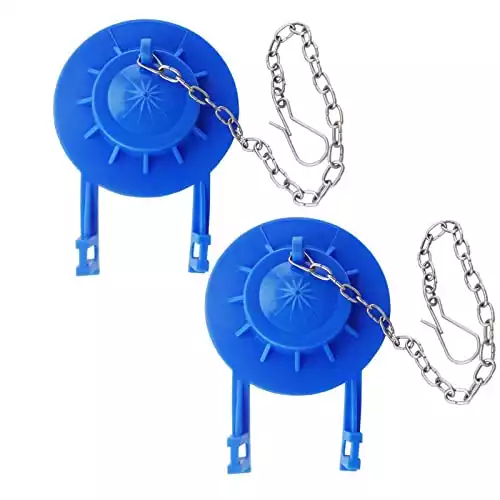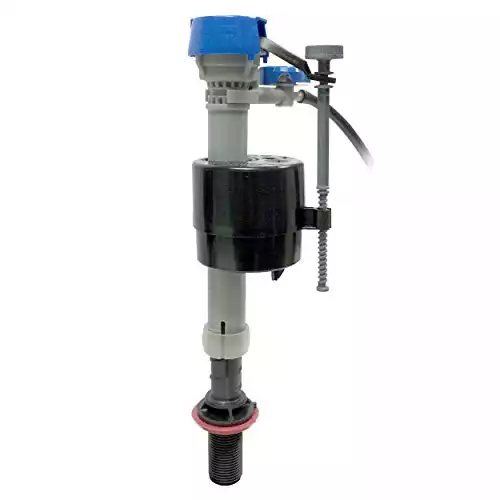Tired of the constant concerts your toilet is hosting? Listening to the gurgling, sucking sounds of a constantly refilling tank?
Follow this definitive step-by-step guide to learn how to stop the toilet from running once and for all.
How to Stop Toilet from Running: A Summary

Alfernec/Shutterstock
Fixing a running toilet is easy. There are only three possible causes of a running toilet, and all of them take mere minutes to fix.
If you already know what the issue is, jump to one of the steps below; otherwise, follow along with the guide to fix your running toilet.
- Step 1: Scope out the Problem
- Step 2: Drain the Water
- Step 3: Correcting the Water Level
- Step 4: The Flapper
- Step 5: Changing the Fill Valve
- Step 6: Refill the Tank and Double-Check
How to Stop a Toilet Running in 6 Steps
Step 1: Scope Out the Problem
The first step to fixing a running toilet is to figure out the source of the problem. Diagnosing the issue is an easy feat. The first thing to check for is if the water level is too high.
You can tell this is the problem if water is constantly spilling over into the overflow tube. If this is the case, continue to step 2 and then perform step 3. The second issue that may be causing the toilet to run is the flapper.
The flapper is the cover at the bottom of the toilet that lets water into the toilet bowl to flush.
If the chain is too taught and is holding the flapper open slightly, or the toilet stops running when you push down on the flapper, continue to step 2 and then follow the directions in step 4.
The final issue that may be plaguing your toilet is a bad fill valve.
The fill valve is the large component that sits above where the fill pipe lets in. If the water level and flapper are fine, then it is the fill valve that is causing issues. If this is the case, continue to step 2, then follow the instructions in step 5.
Step 2: Drain the Water
The first step to fixing a running toilet once you’ve figured out what the problem is is to grant yourself access to the toilet tank. To do this, you will need to drain the water.
On the back of the toilet under the tank, there is a flexible pipe that goes into the wall; this runs the water supply. Turn off the water supply by turning the knob on the wall, and then flush the toilet.
You will notice there is still an inch or two of water at the bottom of the tank, so set a bucket under the pipe where it connects to the toilet and use a pair of pliers or a wrench to remove the pipe.
Once all the water has drained out, you can move on to the next step.
Step 3: Correct the Water Level
Now that you know the issue is the water level, you can go ahead and grab a screwdriver. No matter the design of your fill valve, there should be a screw somewhere at the top that controls the float arm or flap.
If your toilet uses a float arm, there is usually a plastic screw at the hinge point. Tightening this screw will force the float arm down further and limit how far it can come up.
The float arm signals when the water level has reached fullness after a flush.
The lower it sits, the less water will fill that tank. Modern fill valves don’t have float arms, but they do have a screw that controls the cap over the valve.
You can adjust this in the same manner as the float arm. This process will take some trial and error.
Step 4: Check the Flapper
If the cause of the running is the flapper, it could be one of two problems. Either the chain is too tight or the flapper needs to be replaced. If the chain is too tight, you will notice that the flap remains slightly open when the chain is at its most relaxed.
To fix this, lift the flapper to allow some slack into the chain and then unhook it. Move the hook down a link or two to allow more slack in the chain. If this does not fix the issue, try moving the hook farther.
If altering the chain doesn’t solve the problem or the toilet stops running when you press on the flapper, then you will need a new flapper. Remove the chain and unhook the sides of the flapper. Replace it with a new one, and you’re done.
Step 5: Change the Fill Valve
The last thing that may be causing your toilet to run is a broken fill valve. It is both easier and cheaper to purchase a new valve than to try to repair the old one. Fill valves are almost universally interchangeable, so it shouldn’t matter which you pick to replace them.
To replace the fill valve, remove the nut on the underside of the tank that holds the fill valve in place.
Install the new valve in its place. Make sure to retighten the nut. You will need to set the water level, too, when you install a new valve. See step 3 for full details on adjusting the water level.
Step 6: Refill the Tank and Double-Check
Once you have made the necessary changes, reconnect the fill pipe to the bottom of the tank and turn the knob back on at the wall.
Wait until the tank fills fully, then check to see if the issue is resolved. If the water no longer runs, then you’ve done it! You fixed a running toilet.
Things to Consider
While fixing a running toilet is usually a simple matter, there may be some other considerations to account for.
- It may be dirty. If your toilet tank is particularly grimy, especially around the flapper, a good cleaning may be all it needs to fix running issues.
- The anatomy of a toilet. Get to know the parts of a toilet before you start poking at it. There aren’t many components, so take the time to learn what each does.
Frequently Asked Questions
Depending on the cause behind the running and the severity of the leak, a running toilet can waste anywhere from 200-300 gallons of water a day. That amounts to roughly $50-$60 per day in water costs. Not only are running toilets extremely wasteful, but they can end up raising your bills significantly. For the sake of the environment and your wallet, fix your running toilet as soon as possible. The most you will need to fix a running toilet is a pair of pliers or a wrench and a screwdriver. Some people choose to wear rubber gloves when working in the toilet tank, and you may need cleaning supplies if you choose to clean the tank, but most repairs can be done by hand or with minimal tool use. Hiring a plumber to fix a running toilet can cost anywhere from $100-$300. Fixing it yourself, however, will only cost around $20, or it will be entirely free if you don’t have to replace parts. Most replacement parts like fill valves and flapper cost around $20 but can cost anywhere from $5-$40, depending on the model and where you buy it. No, you don’t need a plumber to fix a running toilet. Any issue that may be causing the toilet to run can be fixed in an hour or two by you. A lack of plumbing knowledge should not deter you from DIY toilet solutions. Follow the above steps, and you’ll be fixing toilets like a pro in no time. Intermittent running, or the “phantom flush,” is caused by a slow leak from the toilet tank into the bowl. This means the issue is caused by the flapper. If the flapper chain is too tight, there is grime holding the flapper open slightly, or the flapper is faulty, then water can leak past it. Loosen the chain, clean the tank, or replace the flapper to resolve the issue.How much water do running toilets waste?
What tools do you need to fix a running toilet?
How much does it cost to fix a running toilet?
Do you need a plumber to fix your toilet?
What do you do if your toilet only runs intermittently instead of all the time?
So, How Do You Stop a Toilet From Running?
So there you have it—how to stop a toilet from running. In short, to stop a toilet from running, you first need to diagnose the issue.
If the water level is too high, you will need to adjust it to prevent overflow. Lengthen the chain on the flapper or replace it outright to solve a flapper issue.
Or, if it comes to it, replace the fill valve with a new one.



